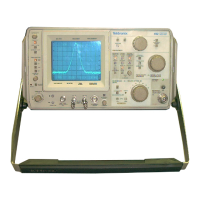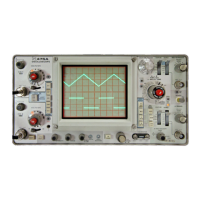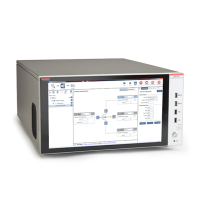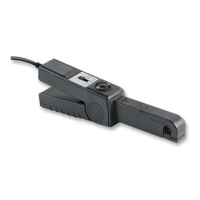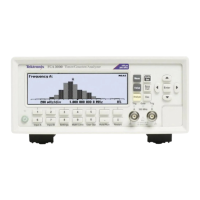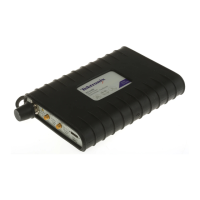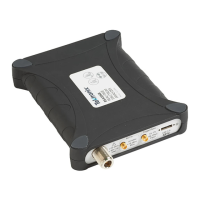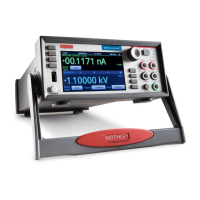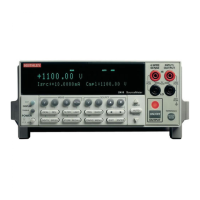circuit. Triggering becomes a funtion of the trigger signal
amplitude and the slope of the trigger signal.
The Trig Level Centering R724 is adjusted with the Trigger
LEVEL control set to zero volts. It is adjusted so a low ampli-
tude input signal will trigger the trigger generator with the
SLOPE switch in either the + or - position.
The trigger generator consists of the comparator Q730-
Q731, the tunnel diode D737 and the amplifier Q740. In
the quiescent state, with the trigger generator ready to be
triggered, the comparator is unbalanced so Q730 is conduct-
ing most of the current. The current of Q731 sets the tunnel
diode between its low operating and threshold state.
If the current through Q731 is increased by the application
of a trigger signal (negative-going signal on the base of
C2730 or positive-going signal on the base of Q731) the tunnel
diode will shift to its high state. When the TD shifts to its
high state, a fast-rise pulse is generated at the base of the
amplifier Q740, This generated trigger pulse is amplified,
inverted and applied us a positive-going pulse to the sweep
gating multivibrator Q750-Q751. The output waveform of
the multi vibrator is the sweep gate to the sweep circuits
and the CRT unblanking signal.
Sweep Gating Multivibrator. The positive-going input
pulse from the collector of Q740 turns Q750 on and flips
the multivibrator. This applies a negative-going gate to
the emitter follower Q752 which provides the unblinking
pulse for the CRT blanking plates and the sweep gate signal
to the emitters of the gated comparator Q770-Q771. The
sweep gating multivibrator is a bistable oscillator so it
will remain in this state until a signal is applied to the circuit
to switch the multivibrator back to its pretriggered state.
The sweep gate signal steps the emitter potential of
the gated compartor Q770-Q771 from approximately 1 volt
to 0 volt. The DC level on the base of Q771 is approximately
300 mV (set by the voltage divider R779 and R778). The base
voltage of Q770 is approximately 1.3 volts (set by the 10:1
voltage divider R770 and R771). Both sides of the comparator
are therefore back biased when the negative-going gate is
applied to the emitters. The collector of Q771 steps down
abruptly, gate diode D781 disconnects and the Miller runup
circuit action is initiated.
Sweep Generator.
When diode D781 disconnects, col-
lector current from Q771 is interrupted so the base of Q790
starts toward the -10 volt supply.
The Miller runup circuit is essentially a high gain amplifier
employing negative feedback, The positive-going voltage at
the collector of Q791 is fed back through runup emitter fol-
lower Q800 and coupled through the timing capacitor C785
to the base of Q790. This feedback voltage opposes the
tendency for the base to swing negative. Because the gain of
the amplifier Q790-Q791 is high, a very linear rate of charge
is maintained on the timing capacitor C785. Timing current
through R785 almost equals the charging current of C785 so
the base of Q790 moves only a very small amount during run-
up.
The linear voltage rise at the emitter of Q800 rises to
approximately 7.5 volts (set by the Sweep Length adjust-
ment R759) and pulls up the base of Q751 to its forward bias
state. At this point the gating multivibrator is flipped to its
pretriggered state. The emitter of Q752 now steps up to
approximately +9 volts.
When the emitter voltage of Q752 steps up, Q771 is turned
on hard. This applies forward bias to the disconnect diode,
and timing current plus extra base current is now supplied
by Q771. The Miller circuit now starts to run down and will
continue to run down until diode D770 is forward biased.
This occurs when the emitter potential is approximately 0.6
volts more negative than the 1.3 volt potential on the base of
Q770. This turns Q770 on. It now shares part of the available
current. The rundown of the Miller circuit levels off and a
condition of equilibrium is maintained. The output voltage
level of the Miller circuit remains near O V until the next gate
is applied to the gate comparator, when it again runs up to
generate another sweep ramp.
Diode D782 conducts if the positive voltage excursion
on the base of Q790 should be excessive. This prevents the
Miller circuit from hanging up.
Holdoff Circuit. When the sweep gate is applied to the
emitters of the gated comparator, the collector of Q770 steps
down from approximately 0 volts to -1.4 volts (drop across
D767 and D768). The negative-going gate to the base of
Q761 is amplified and applied to Q760 as a positive-going
gate. This turns Q706 on hard. The resultant current demand
of Q760 through R741 pulls the emitter of the trigger amplifier
Q740 down far enough to cut Q740 off. No trigger signal
can now get through from the trigger generator to the sweep
gating multivibrator.
When the sweep gating multivibrator is flipped to its
pretriggered state by the sweep ramp on the base of Q751,
the positive-going gate at the emitter of Q752 is not suf-
ficient to turn Q770 on. The sweep ramp must run down
to approximately 0.6 volts to turn D770 on. After a time
delay period, established by the RC feedback network (C761
and R762 between the collector and base of Q760), the
collector current of Q760 will decrease. This increases the
forward bias of Q740 to the point where it again conducts
and an applied trigger signal to the amplifier will now go
through the amplifier to trigger the sweep gate multivibrator
and initiate another sweep.
Sweep rate is a function of the timing resistors R785 and
timing capacitors C785. R786 is the VARIABLE control which
provides an approximate 2.5 times sweep rate change be-
tween the TIME/DIV selector (SW785) positions.
Horizontal Amplifier. The sawtooth voltage at the emitter
of Q800 drives the paraphase amplifier Q810-Q820 which
converts the single-ended sweep from the sweep generator
to a push-pull drive signal for the horizontal deflection plates.
The paraphase output amplifier is long-tailed to the constant
current source Q830 and Q831. Horizontal gain is provided
by the GAIN adjustment R813. Horizontal trace positioning is
provided by the POSITION control R823 which shifts the DC
output level to the horizontal deflection plates.
CRT and Blanking Circuit
This circuit contains the high voltage generating and
regulating circuits for the accelerating potentials on the
CRT, plus an unblinking circuit, and a baseline suppressed or
intensifier circuit.
High Voltage Circuit. The high voltage oscillator Q1003
drives the primary windings of the high voltage transformer
T1010. The high voltage rectifier circuit, containing D1014
3-13

